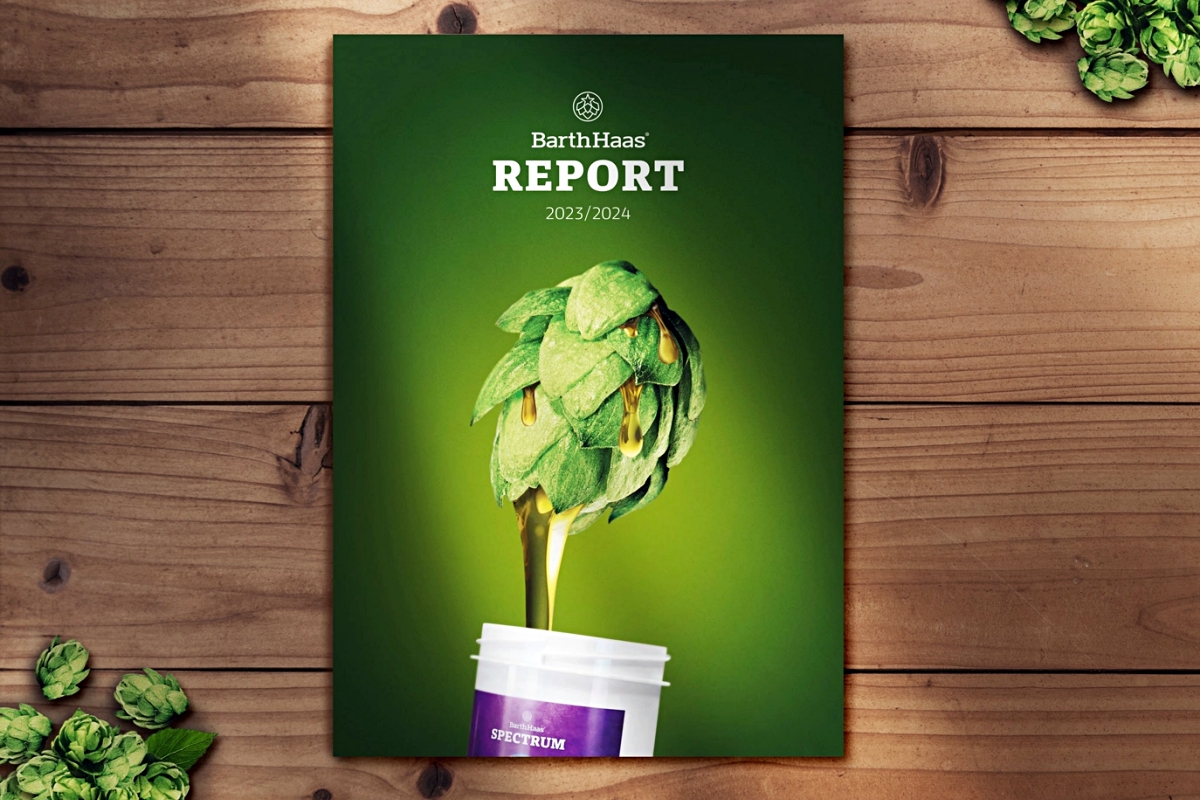
World hop acreage declined in 2023 for the second year in succession. It decreased by 3.3 percent year on year to stand at 60,641 hectares. The USA was once again the country with the largest hop acreage worldwide, with 22,545 hectares, even though large areas there had been taken out of production (-8.9 %). It was closely followed by Germany with 20,629 hectares (+0.1 %). The Czech Republic came a distant third with 4,860 hectares (-1.7 %). In crop year 2023, the USA and Germany together accounted for 71 percent of world hop acreage and harvested a total of 75 percent of world crop volume. This is one of the facts contained in the BarthHaas Report 2023/2024 that the world’s leading hop specialist presented during an online press conference on July 16.
Market remains oversupplied
Despite the reduction in acreage, hop production volume in crop year 2023 was higher year on year, reaching a figure of 118,415 metric tons – an increase of 11.5 percent. The yield of approximately two metric tons per hectare was within the long-term average. In addition to crop volume, alpha acid content is a crucial metric for the hop and beer industries. The mean alpha acid content of 10.0 % in 2023 was only slightly below that of the previous year. The proportion of aroma hops in both crop and alpha yield fell by three percent, while there was a corresponding increase in that of bitter hops.
Although acreage had been reduced and yields on the whole were average, the harvested alpha volume of 11,839 metric tons was 9.4 percent higher than in 2022. “The alpha balance accumulated in recent years still shows a significant market oversupply. Hop acreage must be reduced to bring production volume into line with lower demand and to return the market to something approaching equilibrium”, explains Heinrich Meier, the author of the BarthHaas Report.
(Explanation: Alpha acid is the most important hop constituent for brewing and is responsible for the bitterness of the beer. Hop growers sell their hops partly on the basis of the alpha volume delivered, and alpha acid is also often a price factor in contracts with breweries.)
Number of hop growers falls
Meanwhile, the number of hop growers in Germany also continues to decline. 13 growers discontinued production last year. The average planted acreage farmed by Germany’s remaining 1,040 hop growers increased to 19.8 hectares (+0.2 ha) in crop year 2023. “To make it possible for our hop growers to have stable yields and incomes, it is necessary to further research and optimize farming methods”, says Peter Hintermeier, Managing Director of BarthHaas. He adds that thanks to the close collaboration of all the market participants, groundbreaking solutions have already been developed for hops. “There are already new varieties available today that can gradually replace the climate-sensitive traditional ones”, Hintermeier explains.
Linking hop producers and brewers
In times shaped by climate change and unfavorable political and economic conditions, BarthHaas sees itself more than ever as a link between the hop producers and the brewers. Thomas Raiser, Managing Director of BarthHaas: “Only by cultivating and building on our good contacts can we identify the concerns and hardships of our suppliers and customers and respond to them.”
The fact is: Energy, raw materials, packaging, logistics, and labor costs remain at a high level, putting pressure on the breweries’ profit margins. BarthHaas has responded to this development and developed new hop products with which the breweries can produce their high-quality beers more efficiently and more profitably. “And in the future, too, we aim to use our creativity and innovativeness to support our customers as a partner they can rely on”, says Raiser.
Click HERE to download the BarthHaas Report 2023/2024.
SOURCE: BarthHaas (Press Release)
PHOTO CREDIT: BarthHaas
